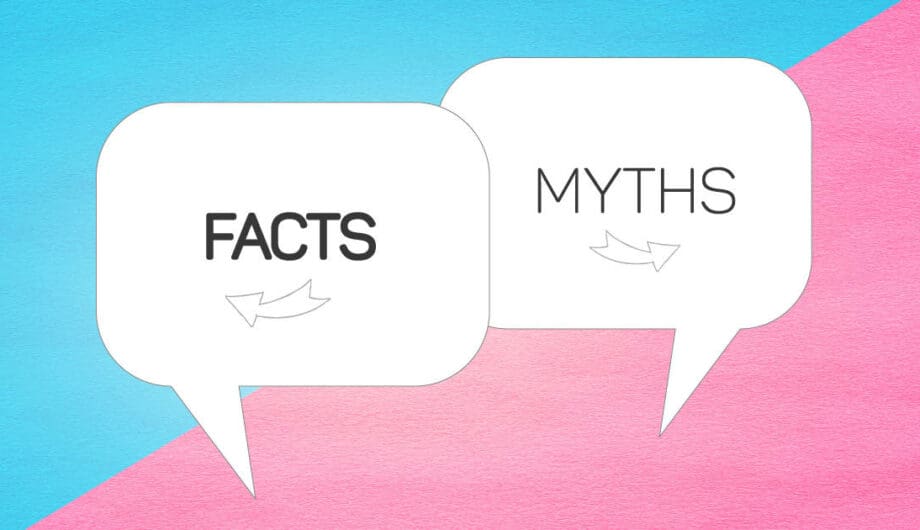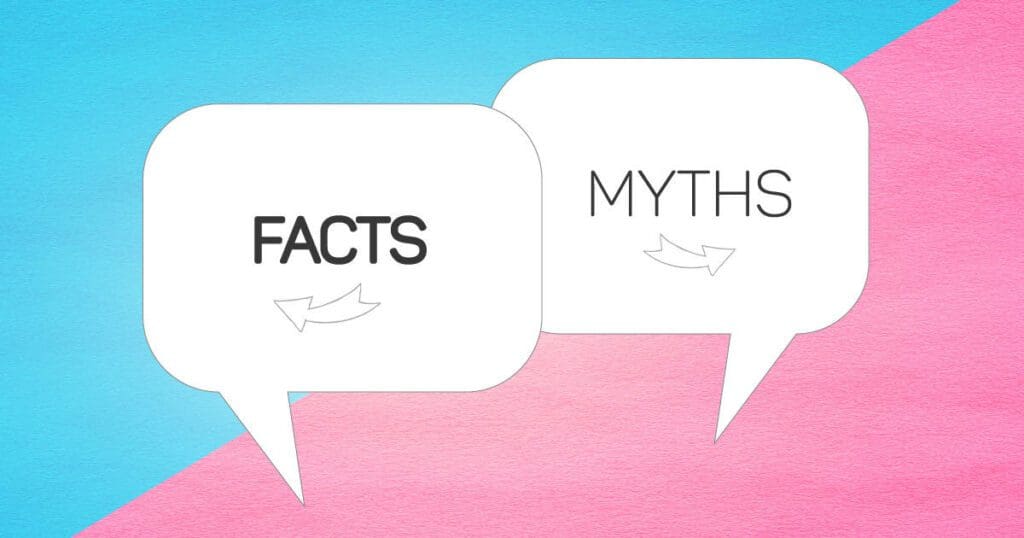
Have you ever noticed that when people have been using a tool or service for a long time, they often feel like they are an expert on that subject, even if they’ve never been behind the scenes? Take teaching, for example. Some people assume that it’s not that hard and they could do it, because they spent their whole lives in classrooms. Same for managing a restaurant or even being a server, it can’t be that hard because they’ve been eating in restaurants their whole lives. I frequently talk to people about websites and they say things like, “This is going to be easy” or “This won’t be hard” because they’ve been using the Internet for 2o years, even if they’ve never been on the other end of building one. Because of this, there are a lot of myths out there about web design, and I wanted to hit a few key ones and debunk them in this blog post.

-
People won’t scroll
I can’t tell you how many times I’ve had clients ask me to put all the content and graphics above the fold because they don’t want people to have to scroll. And while I will say that it is true that your most important elements should be above the fold, it is not true that people won’t scroll. If your website is well designed with a proper flow, people will scroll down to see more information. A few things to consider, the fold isn’t the same for everyone. If I’m looking on my desktop computer versus on my phone, the fold is different. There are an infinite number of screen/browser/device combinations that could put the fold in different places. So what you see on your computer is not the same fold for everyone. Furthermore, we’ve gone to great lengths to make scrolling super easy. It’s not like they have to grab the scroll bar on the screen and manually scroll down the page. It’s easy to scroll (but definitely put a scroll to top button on your site.)
-
Using Facebook for your website is good enough
This is one I hope will die and die soon. (See my full blog post on why you shouldn’t use a Facebook page for your website.) If all you have is a Facebook page, then you are limiting your customers to people who use Facebook. Not everyone does and in fact, there’s a contingent of people who really don’t like it and have no interest in using it. Yes, it’s easy. Yes, it’s free. Yes, a lot of people use it. But you can’t control Facebook. Facebook controls Facebook. You can display some content on Facebook, but it is within the confines of Facebook.
-
How it looks is the most important part
I’m not saying how it looks is unimportant. That’s not what I’m saying at all. Looks are really important. But it’s not the most important part. Your content, the message you are delivering to your users, is the most important thing. Keep in mind that if a visitor lands on your site, they most likely landed there because they are already interested in what you offer. They probably didn’t click on a cat meme or take a “what country should I live in” quiz to land there. They’ve arrived because they need something. They need to know if your business can provide to them what they need. If your content doesn’t answer their questions, then they’ll leave without contacting you.
-
Mobile users are distracted
Surveys say that the majority of mobile users are actually using their phone… in their home. Not on the road, not out in restaurants, but at home. Probably while sitting on their couch or in bed. There is a good chance they aren’t distracted, they just want to sit in a comfy spot and look up information. So your mobile experience is important. They need to be able to read your content. Don’t remove content for mobile users. Remove unnecessary graphic elements. For example, a logo grid looks great on a desktop, but having to scroll past 12 logos to get to your content? Not great on a phone.
-
White space is wasted space
One of my favorite quotes is: “White space never killed a conversion.” This is true. White space is the area between design elements. Fun fact – it doesn’t have to be white. It can be any color, texture, pattern, or image. People get overwhelmed when elements are filling every nook and cranny. They need space to help them process the information. A good designer will use white space to make the website easy to digest for readers so that your website goal is met and users aren’t leaving because they are frustrated or bombarded with information in ever space.
It’s easy to feel like an expert on a subject when you’ve been using that service for years, but it’s a lot different when you are on the other end and there a lot of misconceptions. One of the things I always tell my clients is that we are experts in how people use websites – and the person who needs a website is an expert in how they, individually, use websites. And these are very different. You can trust a pro to know what to avoid and what to add when it comes to your web presence.
Amy Masson
Amy is the co-owner, developer, and website strategist for Sumy Designs. She's been making websites with WordPress since 2006 and is passionate about making sure websites are as functional as they are beautiful.

Thanks for the post